CVS “MinuteClinic” Success Story
Hancock- “Healthy 365” Best Practices
Hancock- “Healthy 365” Story of Innovation
Hancock County System of Care is a partnership of local stakeholders across Hancock county that provide services to youth and families, which has developed Health 365. This is a population health initiative and whose goal is to address the needs of service delivery systems for substance abuse and mental health in the county. There are 47 agencies that are involved and provide input and support. They include the Juvenile Justice system, providers, social workers, local schools, state office for Medicaid and Family First. By promoting health, happiness and wholeness, they are approaching Health in a non-traditional and innovative way to ensure the policies and environment supports healthy behavior.
Health365 has developed over the past 4 months an action plan geared towards specifically addressing health behaviors. They are focused on building a coalition of diverse partners that work to
ensure Hancock County has neighborhoods, public spaces, work environments, transportation infrastructure, and retail venues that all promote physical activity and healthy living.
Best Practices
- Organized goals - They came up with three themes to address the full scope of this problem: Healthier Choices, Mental Fitness and Work Place Wellness. They all have within them 2-4 strategic areas of focus for which action items can be developed. E.g within Healthier Choices the goal was to increase access to and awareness of healthier food options.
- Partnerships - They made local partnerships to provide education in the communities about healthier food opportunities. They are providing information and access to care to everyone regardless of whether they are their patients. Also, there is an online farmers market that allows people to order fresh food and crops all year round to be delivered to a central location and picked up.
- Information - There are 70 primary members who convene monthly to figure out strategies to disseminate this information in the community. They have thousands of secondary members who funnel information out through word of mouth. They are hoping to improve the way they measure improvements in health of the communities they serve. This will require improved and real-time data acquisition processes. They are also working on 3-4 health applications that can be provided to people, which will enable the collection of data from people’s smart phones and integration into their population health analytics software.

Johnson & Johnson- “CarePath & Care4Today® Connect” Best Practices
Johnson & Johnson- “CarePath & Care4Today® Connect” Best Practices
Care Path Healthy Engagement shared decision making tool is an animated avatar-type tool that helps educate patients and providers about type 2 diabetes treatment options. It helps patients and
providers make informed and shared decisions about what their next type 2 diabetes medication should be. The value of this is that its interactive, it’s online and it helps patients understand their treatment options and promotes better dialogue between the patients and the healthcare providers when they are making certain decisions.
Care4Today Connect platform (mobile app and web-based dashboard) is designed to empower patients to take an active role in their own health care. Healthcare professionals can assign appropriate, disease area educational content for the patient. If a patient elects to connect with his/her provider, the dashboard provides a direct connection between the patient and provider, allowing visibility to patient self-reported measures.
The problem we are trying to solve is data acquisition on one arm and the patient engagement and patient behavior on the other arm. Our goal is to keep the patient in the middle of everything we do, improve the quality of care and decrease the cost associated with treatment over a multi-year course. We have to think about how we engage patients and how we motivate them to take our products. Adherence to medication is a national problem. The core functionality of the Care4Today platform is the medication reminder.
The CarePath platform conveniently offers online Digital Tailored Coaching which is designed to deliver highly personalized, insight-driven behavior change programs to help patients better focus on
their health and well-being. Digital Tailored Coaching can help motivate patients and encourage them to become more engaged with their health and their life. With periodic check-ins, these coaching programs are designed to encourage longterm engagement and participation. Furthermore, such resources could result in members having increased satisfaction with your overall health plan and offerings.
Best Practices
- Empower the patient - One of the benefits of the Care4Today platform is that it empowers patients to take an active role in their own health care. There are self-directed medication adherence reminders and patient recorded trackers for weight, BP, exercise, pain, mood, blood glucose, appointments and more Disease-based educational content delivery (health tips, etc.). Another benefit is that there is a personalized dashboard that is connected to healthcare professional (HCP). The platform provides a direct connection between the patient and provider, allowing visibility to patient self-reported measures.
- Provide the tools - We provide the providers, payers and patients with a series of tools and resources e.g. we provide payers with digital coaching tools, patients with educational resources. We have the one-touch reveal software that moves patient information to a cloud-based aggregation site that translates the readings into analytics that today give feedback to providers and in the future will give real time feedback to the patients.
- Make the process easy - The real skeptics are the provider groups as they don’t have a lot of time and energy to figure out new technologies, new processes and workflows. Anything you do has to be consistent with their workflows, it can’t create too many manual processes, can’t take yup to many FTE time and motion labor, it must be mostly automated; easy, behind the scenes and seamless with what you do. You have to convince providers why these tools will help them and the patient.

MedStar- “TeleStoke- MI2” Best Practices
MedStar- “TeleStoke- MI2” Best Practices
MedStar Health is a not-for-profit 10 hospital integrated healthcare system serving the Baltimore/Washington region that has created the MedStar Institute for Innovation (MI2) - TeleStroke Program.
The purpose of the MI2 is to catalyze the innovation of the health system to find opportunities to solve problems that we haven’t been able to respond to. The TeleStroke program is
under the MI2 division and provides 24/7 on demand remote service by the neurosciences line for three emergency departments in MedStar. This helps address the increasing demand for clinical neurology services without requiring a doctor to be there in person.
We can now provide on demand access to an acute stroke neurologists who can be wheeled on a monitor to the bed side of the patient. This access would allow transferring hospitals to be able to
keep the patient locally. Time for treatment would be improved especially if someone needs urgent drug administered. Another benefit to the patient nin terms of quality of life is not having to be
transferred to another hospital. A benefit to our hospital is better management of volume and the avoidance of unnecessary patient transfers.
Using Health technology is a means to bring “systemness” to a health system. Now that we have shown that we can pull of tele-consults with stroke and neuro in an ED this paves the way for other
future uses of telemedicine within our system. Now the primary care doctors want to use technology to really start to distribute care where it’s needed and
when it’s needed most. TeleStroke initially started as a way to provide services to external hospitals in need but then it got folded into a broader effort around “systemness”
for our health system. In the middle of the night we want to get eyes on a stroke patient at their bedside. Once we started doing this we realized all the other moving parts of this would also need to be evolved. So now our ability to do remote access to CTs has been improved, our ability to onboard and credential providers across sites had to be rethought and advanced,
Best Practices
- Providing remote care - We shifted contracts of on-call physicians who normally would provide on-site services to now include remote patient care and monitoring. We uncovered that some of the downstream benefits from doing this would be better coordination amongst our sites and services and the reduction of unnecessary transfers.
- Commited time and patience - The programs that are still running are doing so because there are one or two individuals who are still committed and were willing to deal with all of the ugliness and not give up. Having flexible tools and solutions that you can be molded over time is also critical. The ability to automate processes with people instead of systems; we could wait for the perfect system to be built or we can have people do the heavy lifting in the meantime, it’s not the most ideal way to do it but it certainly gets the work done.
- Liscensing - We need to triple license a lot of our providers if they are going to be on any digital platform so that we are covered for DC/MD/VA.
- Getting the message across - Getting physician buy-in is a challenge as we are in this middle space where we don’t have a full virtual practice, how to get the early adaptors to infuse their enthusiasm across the system. Messaging and storytelling is such a huge part in getting buy-in.
- Supporting the system - Internally getting people to realize that it’s not just about the technology. The program also requires a change in staffing models and compensation, as well as integrating virtual scheduling and improved documentation. Clinical workflow around technology management in the ED and devices that get assigned for providers to use for video consultshad to be planned out. The ways our multiple sites connect through our transport service had to be redesigned.
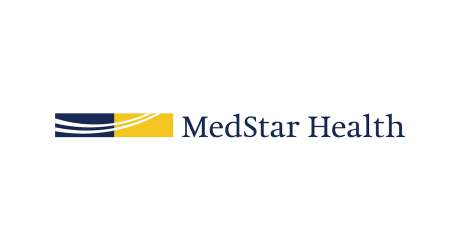
Sutter Health- “Mpower” Best Practices
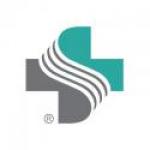
Sutter Health- “Mpower” Story of Innovation
Sutter Health is a not-for-profit health system in Northern California, which has created a project called Mpower. This is an approach that involves the development of systems and models of care that will help engage patients to take greater responsibility for their health and health outcomes. This utilizes a technology that will help the provider and the patient to understand how well the patient is doing well as to assist in manage and coordinate the workflow of care teams.
We are focused on intervention for people with chronic conditions. Our vision is managing both the condition and prevention seamlessly on a continuum using our technology and improved workflows. This is about shifting the model of care and the engagement of individuals in their day to day life by helping people understand and set goals and objectives to make reasonable progress towards health goals. We are currently focused on cardiovascular diseases, liver disorders, diabetes, high blood pressure. The model is generic and can be applied to any disease.The technology is doing the job of helping manage and interpreting information. We’ve developed an application that’s more of a system to support Mpower programs. It complements the functionalities of EHRs.
Best Practices
- Turning data into progress - The technology helps coordinate goals and objectives set by the patient and their care team. Using patient generated health data that is collected from devices that the patient is using e.g glucometer, Fitbit etc. We collect this information in our Mpower system, interpret it and give feedback to the individual in terms of their progress and performance towards achieving their health goals. This helps to stratify patients and identify patients who need additional attention.
- Functionality - We have put a lot of effort into thinking about the workflows and the type of operational efficiencies to make the technology work. We have to think about getting engagement from the physicians who are often quite intolerable to disruptions of their workflow. We have done a lot of work to interface this technology into the Epic EHR that physicians use. This has been very challenging and remains so. We have been creative and have taken functionalities that exist in EPIC and have used them to do interfacing with our Mpower technology. A lot of what we are doing is not directly targeted at physicians. Part of the objectives in this is to enable other care team members to be working in their highest level of practice and not bombard physicians with unnecessary information. This is about enabling the distribution of care across the care team.
- Reaching more patients - It’s challenging to manage the health of patients with complex chronic problems. We are good at managing the health of the patients that come to see us, but what about those patients that do not come? We have a responsibility for those patients as well and as funding models begin to shift to population health we need to find ways to meet them where they are. Part of this is tapping into consumerism and providing a different experience by supporting people in their day to day lives. We need to find ways to enable our care teams to manage more people and scale this program to care for a larger number of patients.
- Adaptibility - We followed a process of rapid cycle innovation. We have allowed ourselves to make very rapid changes to the system based on feedback we’ve gotten. This has enabled us to be nimble in responding to issues that have come up. Being nimble to make changes based on feedback and learning is one factor.
- Long-term: looking at financial sustainability - at this time this kind of process does not generate revenue. We are driving work out of the clinic and providing care in a remote context, and there are not a lot of funding models that compensate for this type of work. At the end of the day we have to be financially sustainable. Hence, our rate of progress may actually be slowed down as there are not many funding models that support this type of approach.
Children's Medical Center Dallas - “School-based Telemedicine,” Best Practices
Children's Medical Center Dallas - “School-based Telemedicine,” Best Practices
Children's Medical Center Dallas is the main hospital campus of Children's Health, and provides expert pediatric health, wellness & acute care services in Dallas and throughout Texas. The school-based telemedicine program was started to use technology innovation to reach kids where they spend most of their time, which is at school. The program brings health services to campuses and promotes health literacy. We assessed the need for this technology through conversations with community partners to learn how to best serve the community. One of the problems we identified was that many kids did not having access to care due to a shortage of pediatricians that accept Medicaid. We found that there are opportunities to bring care to the school setting and reach kids where they are in schools. We then started a pilot and targeted families who are struggling in terms of access to care. We received state funding for the program and launched it at 30 campuses. We are now in final phase and are in 97 schools. This program brings a lot convenience to families as it is usually difficult for parents to take time off from work to take their children to the doctor.
Best Practices
- Outreach - We did a lot of meeting the neighbors, introduced the concept of telemedicine and offered a value proposition to the schools. Initially we had 4 to 5 schools. We went to school boards, families, community pediatricians, family doctors and law makers (legislatures) regarding billing. To our victory, they passed house bill 78 to allow for telemedicine in school setting. We met resistance from the Community at large – resistance from families. To overcome this, we developed a family and parental engagement plan. Community providers worried that we were only doing this to gain more patients so we had to meet with constituents before launching to explain the value it will bring to them. School board and leaders were also resistant. We realized that we needed to have a great message on how program would be successful on campuses.
- Coordination - Initial implementation team had to bring in a lot of internal partners such as marketing, PR, compliance and legal, internal doctors, nurse practitioners and IT team.
- Legal and compliance (FERPA) and HIPAA – types of data needs to be spelled out for agreement purposes

Chesapeake Regional Information System (CRISP) Best Practices
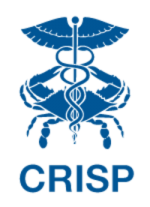
Chesapeake Regional Information System (CRISP) Best Practices
In 2009, the Maryland Health Care Commission (MHCC) and the Health Services Cost Review Commission (HSCRC) designated the Chesapeake Regional Information System for our Patients (CRISP or State-Designated HIE) to build and maintain the technical infrastructure to support a statewide HIE. The long-term goal of the State-Designated HIE is to build the fundamental foundation for interoperability to communicate health data among Maryland physicians, hospitals, and other health care organizations and providers. The State-Designated HIE will also enable communities with regional HIEs to connect to other communities around the State and, in the future, with providers in other states.
Best practices
- Wide range of data - We created a report that combines hospital claims data to allow users to filter with hospital MRN, etc. It is through this report that hospitals identify the high-risk patients. CRISP gets all hospital claims data, mpi – longitudinal records.
- Provider access - Report goes to doctor, on the front end of care coordination. List can be exported so that doctor can follow up.
- Analytics - The value we add is analytics that can flag readmissions, chronic conditions etc. Report gives director of care management insight intotrends and allows the function to search patient by condition. This functionality is a powerful tool that can be used in initiatives to avoid readmissions, etc.
- Training - In our organization we built a training program so they understand use cases
- Goal setting - We have set milestones – actual people who use the technology, number of times accessed.
Quality Health Network HIE Best Practices
Quality Health Network HIE - Best Practices
QHN is a not-for-profit community partnership, established to support the adoption of health information technology, provide health information exchange (HIE) services and promote innovative uses of electronic health information for improved healthcare outcomes. We try to link the information about people such that providers of services can do a better job. We are really interested in connecting service providers to the needs of individuals. Our organization is not just about technology, it’s about the relationships we build, it’s about people and processes and workflows.
We are trying to do a better job of data collection and distribution as well as aggregation and normalization in order to provide relevant and meaningful information to our stakeholders at an appropriate time. There’s far too much data and not enough information. Doctors are drowning in data and what they are interested in is information. We do a variety of things to filter and to customize what we push to the physicians based on the individual physicians practice and preference.
Using health IT leads to benefits by facilitating creating value designed for specific stakeholders.
Best Practices
- Filtering - With routing and mapping we are able to filter the information using Mirth Connect which is an interface engine software. On top of the exchange of patient data we are also able to do really high level filtering which is really unique.
- Physician input - Physicians dominate our board and direct what we do. We could not figure out why the longitudinal health records that we created were not being used more frequently. The physicians then helped us to understand that we did not have the right information in there. They said “we can always go to a hospital or a lab to see lab tests and radiology reports and discharge summaries, but what we cannot see is the progress notes that an ambulatory physician wrote two weeks ago while the patient was in the hospital”.
- Utilizing progress notes - QHN began doing progress notes which basically tells the patient’s story as opposed to plain discrete data. Most of the CCDs don’t have the progress notes in them. We have been engaged in collecting them using very special interfaces and working willing EHR vendors who would export those notes to us.
- Pushing the data - This makes it easier for providers to receive the information they seek. The concept of ‘push’ is based on the premise that we really want to understand when an exceptional event has occurred, notify the relevant people that the exceptional event has occurred and may need additional scrutiny, and then either provide the data directly to the providers who need to know about it or give them the ability to query that specific information. We observed that there was a dramatic difference between the number of ED acute stay admits and discharges that we were collecting verses the number of times we were actually able to inform the physician that their patient showed up in the ED. So we began a process that we call “Subscription” which allows us to push this information to the primary care doctors who are subscribed to the HIE so that the doc knows that the patient has been admitted into the ED. We are not depending on the registrar to ask who their primary care doc. We can also send this to case management for Medicare and Medicaid patients who do not have primary care doctors.
- Watch out for vendor consolidation - We are attracted to smaller very nimble vendors because they are able to meet the needs of our participants. What happens all too often is that these small nimble organizations get bought up by larger ossified bureaucracies and the cost typically goes up and the nimbleness goes down. This is a problem for our industry. Size does not necessarily equate to success. We not only have to have sufficient revenue streams to sustain our operations but we have to accumulate sufficient revenue to have capital available to replace platform components when the vendor situation has changed and caused us consternation. Many of the people in our space do not fund depreciation of their platforms; they do not plan to have to swap it. In addition to consolidation of the industry there will be an ongoing cost to conversions.
- Price adjustment - Try to tie subscription rates to lives covered, that is per member per month, as opposed to one price regardless of size. This will be a much more structed methodology of providing for smaller scale participants and permits the ability to grow revenues over time as the scale increases.
American Heart Association- “Guideline Advantage” Best Practices
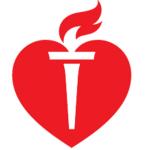
American Heart Association- “Guideline Advantage” Best Practices
AHA is the largest voluntary health organization in country dedicated to improving the lives of cardiovascular and stroke patients. We have a 20/20 impact goal to improve cardiovascular health of all Americans by 20% by the year 2020. As a national organization, we have 7 offices across the country that are responsible for rolling out local and statebased activities. We have clinician members, however, we are a patient organization. Our clinician members offer a professional council and a clinical vantage point. There are 30 million clinician and advocate volunteers which include patients, family members, caregivers etc.
AHA's innovation is a program called “Guideline Advantage” which is a quality improvement program enabled by a registry that helps physicians to monitor and track their patient populations. It sits on top of the EHR and is vendor agnostic. It is a collaborative project with the American Diabetes Association and American Cancer Society. The program itself is a qualified data registry for the purposes of reporting.
The program was built on the AHA clinical care guidelines and is intended to speed the time for which clinical guidelines are put into practice and support physicians in delivering evidence based care. The program is also aimed at identifying gaps in care so that physicians can target their care to address these deficiencies. At a practice level physicians are finding that it gives them the data the need to manage their patients on a population level. It provides more usable information that can be extended to offer clinical insight at a population level.
Utilizing health IT will improve health outcomes of patients in the short-term by leveraging information in the system that can be used by physicians to improve delivery, and increase evidence based care being delivered and better health outcomes in the long-term, ultimately moving towards AHA's 2020 goal.
Best Practices
- Utilizing expertise - As AHA is a volunteer based organization, we drew on the expertise of our volunteers and the volunteers at The American Cancer Society and The American Diabetes Association. We used volunteer boards to help lay out what the program should look like, decide which guidelines to focus on, and what information clinicians will need during and after the point of care. The actual infrastructure of the program was created by a vendor called Forward Health Group.
- Coordination - We have had to work with the 2 other organizations to ensure buy-in across the board. This entailed working with their members and that of the other organizations’. We also worked with internal staff to plan the day to day operation of the program. Buy-in had to be obtained from primary care physicians, oncologists and other physicians. AHA’s side worked through details with volunteers to make sure we were comfortable with the central premise and structure of the program at every step of the process. From a physician standpoint, it involved conducting demonstrations, going into practices and making sure it sits on top of existing technology. A lot of onboarding was done initially by working with both other organizations from the onset so that it did not seem like one organization’s project. This involved a lot of internal messaging working with external physicians to help them understand how this program achieves the organization’s mission. There is still a fair amount of internal by-in that needs to happen in order propel its success further.
- Education and training - Stakeholders were prepared through upfront knowledge building on the product; explaining what it can do. Once we decide we want to implement product there is prep work to make sure data map and the tools work. Following this is a series of trials and tests to make sure that it is operating effectively. A fair amount of training is also involved- although it does not necessarily require changes in workflow, training is needed in terms of how it can be used to help current quality improvement programs in practices. A fair amount of education and organization capacity building is also required. Once implemented, technical assistance is offered to help them optimize their use of the tool.
- Showcasing potential - The assumed response by physicians is that this is going to be more work or more of an administrative burden. We had to do a lot of hand holding demonstrations to help them to see the potential of their data by demonstrating what it can do. This required efforts to connect this program to other existing programs that physicians were using.
CORHIO Best Practices
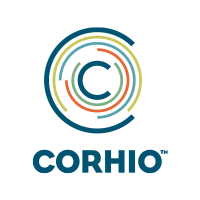
CORHIO Best Practices
Improving health through enhanced use of information technology and data exchange is the heart of what we do. We manage one of the country’s largest and most successful health information exchange (HIE) networks, provide advisory services that help healthcare professionals effectively use technology and improve care delivery, and supply health plans and accountable care organizations (ACOs) with valuable data that enhance analytics and population health programs. As an independent, non-profit organization, we are dedicated to serving all of Colorado's healthcare stakeholders including physicians, hospitals, behavioral health, emergency medical services, public health, long-term care, laboratories, imaging centers, health plans, communities and patients.
We were asked to solve the problem of combining data from different grants to focus on behavioral health. We became financially sustainable, successful at exchanging data and opened doors to behavioral health which proved to be of great value to the healthcare community. We were recipient of several grants which encouraged combining healthcare and behavioral health; key
component of grant was how to exchange the information.
Our core interest is to ensure that the providers and patients are connected to have the whole view of a patient and can understand connectivity of different aspects of their health and care; many
behavioral health patients also have substance abuse problems.
Best Practices
- Consent Management System - We decided to create a consent management system for mental health groups – added another exchange method to HIE. We are the only group that allows docs to determine which information is available to be exchanged. Patient can determine which doctor sees the information.
- Education - We educate patients on this consent practice using a 3 pronged approach – collaborating with a substance abuse treatmentorganization – they will create educational materials for patients – both written and electronic video; work with peer support specialists; make the consent be available within the personal health record. HIEs are also educating primary docs on the value of behavioral health on primary care.
